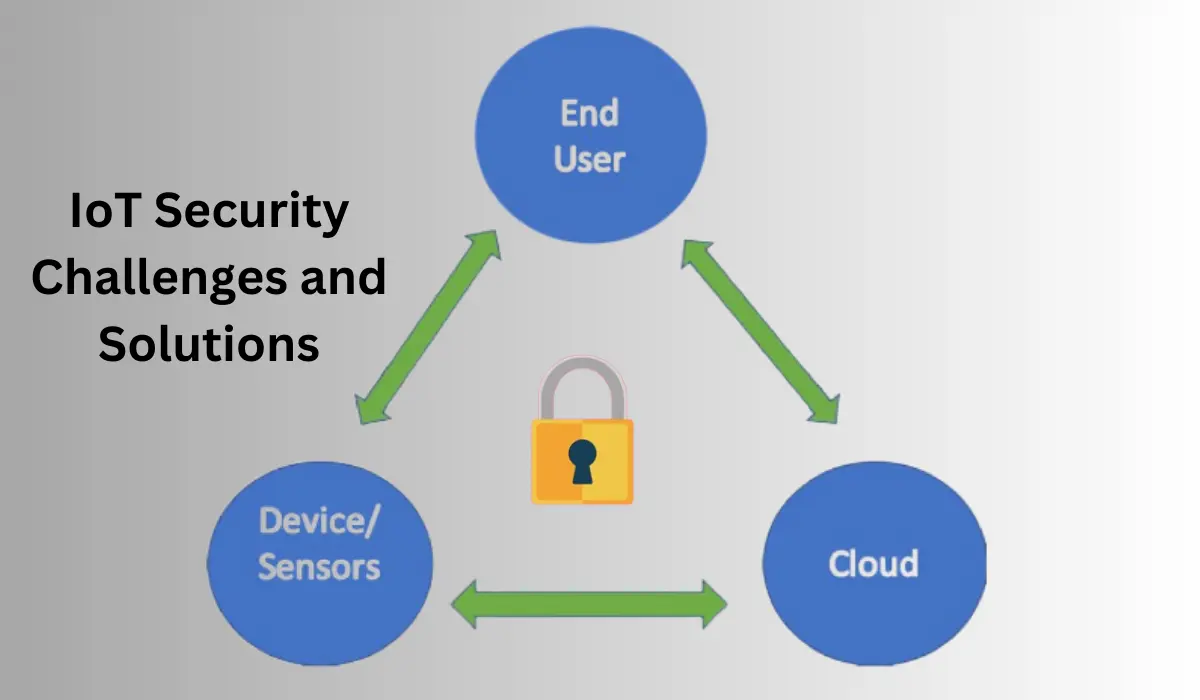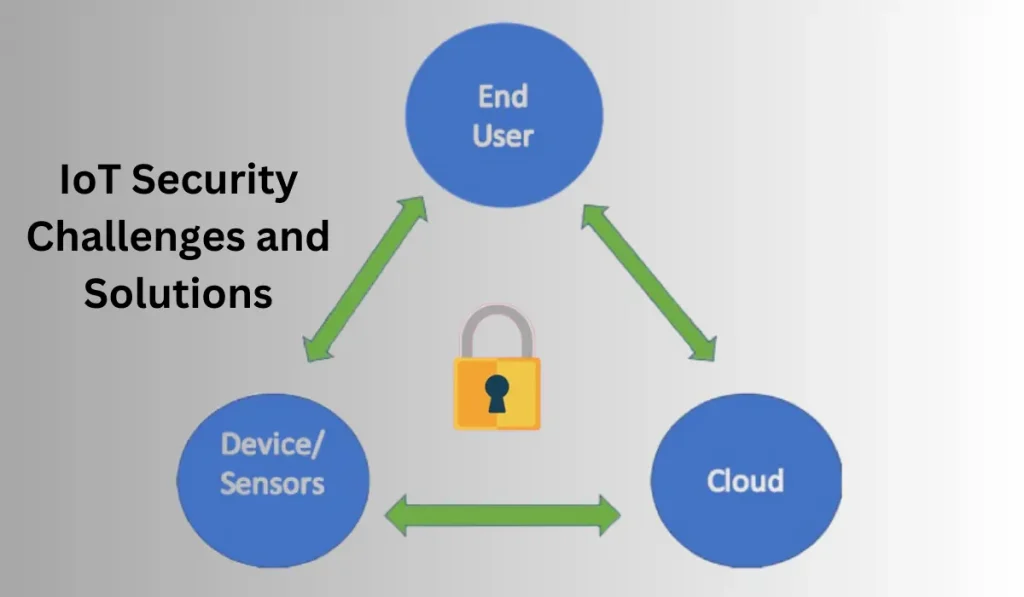In an increasingly interconnected world, the Internet of Things (IoT) promises unprecedented convenience, efficiency, and innovation across various industries. From smart homes and wearable devices to industrial automation and healthcare systems, IoT technologies have the potential to revolutionize how we live and work. However, this interconnectedness also brings forth a host of security challenges that must be addressed. In this context, our focus is on IoT security challenges and solutions.
Let’s jump into the deep:
Addressing IoT Security Challenges and Solutions
The Internet of Things (IoT) presents immense opportunities for innovation and efficiency across industries, but its widespread adoption also brings forth significant security challenges. To ensure the integrity and resilience of IoT ecosystems, organizations must implement robust solutions and best practices to mitigate these challenges effectively. Let’s explore some key IoT security challenges and the corresponding solutions and best practices:
1. Device Authentication and Authorization
Challenge: Weak authentication mechanisms and inadequate authorization processes leave IoT devices vulnerable to unauthorized access.
Solution: Implement strong authentication protocols, such as two-factor authentication (2FA) or multi-factor authentication (MFA), to verify the identity of users and devices. Additionally, enforce strict authorization policies to control access to IoT resources based on user roles and privileges.
2. Data Encryption and Privacy
Challenge: IoT devices generate vast amounts of sensitive data, raising concerns about data privacy and confidentiality.
Solution: Encrypt data both at rest and in transit using strong encryption algorithms. Employ secure communication protocols such as TLS/SSL to ensure data confidentiality during transmission. Implement data anonymization and pseudonymization techniques to protect sensitive information while still allowing for meaningful analysis.
3. Firmware and Software Updates
Challenge: Vulnerabilities in IoT devices can remain unaddressed due to the lack of regular firmware and software updates.
Solution: Establish a proactive patch management process to ensure timely deployment of security updates and patches. Automate the update process whenever possible to minimize the risk of human error and ensure the swift remediation of known vulnerabilities.
4. Network Segmentation and Access Control
Challenge: IoT devices often share the same network as other IT systems, increasing the risk of unauthorized access and lateral movement within the network.
Solution: Implement network segmentation to isolate IoT devices from critical systems and services. Employ access control mechanisms, such as VLANs and firewall rules, to restrict communication between IoT devices and other network segments based on predefined policies.
5. Secure Development Practices
Challenge: Insecure coding practices and inadequate security testing during the development phase can result in vulnerabilities in IoT devices and applications.
Solution: Adopt secure coding standards and practices, such as the OWASP IoT Top 10, to mitigate common security risks during the development lifecycle. Conduct regular security assessments, code reviews, and penetration testing to identify and remediate vulnerabilities early in the development process.
6. Supply Chain Security
Challenge: The complex supply chain involved in manufacturing IoT devices introduces the risk of tampering, counterfeit components, and supply chain attacks.
Solution: Implement supply chain security measures, such as vendor risk assessments, third-party audits, and secure boot processes, to verify the integrity and authenticity of components throughout the supply chain. Establish trusted relationships with suppliers and manufacturers to ensure transparency and accountability.
7. Security Awareness and Training
Challenge: Human error remains a significant contributor to security incidents, underscoring the importance of security awareness and training for employees and end-users.
Solution: Provide comprehensive security awareness training to educate employees and end-users about common threats, phishing attacks, and best practices for securing IoT devices and data. Foster a culture of security awareness and accountability within the organization through regular training sessions and awareness campaigns.
Also Read
Importance of IoT Security
The Internet of Things (IoT) has revolutionized the way we interact with technology, enabling seamless connectivity and automation across various domains, from smart homes and cities to industrial processes and healthcare systems. However, as the number of connected devices continues to proliferate, so too do the security risks associated with IoT ecosystems. Understanding the importance of IoT security is crucial for ensuring the integrity, confidentiality, and availability of data and services in an interconnected world.
1. Protection of Sensitive Data
One of the primary concerns surrounding IoT security is the protection of sensitive data generated and transmitted by connected devices. IoT devices collect a wealth of information, including personal and confidential data, such as health records, financial transactions, and geolocation data. Without adequate security measures in place, this data is vulnerable to interception, tampering, and unauthorized access, potentially leading to privacy breaches, identity theft, and financial fraud.
2. Prevention of Cyberattacks and Data Breaches
IoT devices, particularly those with weak security controls, are attractive targets for cybercriminals seeking to exploit vulnerabilities for malicious purposes. Cyberattacks targeting IoT infrastructure can have far-reaching consequences, ranging from disruption of critical services and financial losses to compromise of infrastructure and public safety risks. By prioritizing IoT security, organizations can mitigate the risk of cyberattacks and data breaches, safeguarding both their assets and the trust of their customers and stakeholders.
3. Preservation of Operational Integrity
In industrial settings, IoT technologies play a pivotal role in optimizing processes, monitoring equipment performance, and enabling predictive maintenance. However, the integrity of these operations can be compromised if IoT systems are vulnerable to manipulation or sabotage. Ensuring the security of industrial IoT (IIoT) deployments is essential for maintaining operational continuity, minimizing downtime, and safeguarding the integrity of critical infrastructure and production processes.
4. Maintenance of Consumer Trust
Trust is paramount in the adoption and acceptance of IoT technologies by consumers and businesses alike. Security breaches and privacy incidents erode trust in IoT products and services, leading to reputational damage, loss of customers, and regulatory scrutiny. By prioritizing IoT security and demonstrating a commitment to protecting user privacy and data confidentiality, organizations can foster trust and confidence in their IoT offerings, driving continued adoption and loyalty among customers.
5. Compliance with Regulations and Standards
The regulatory landscape surrounding IoT security is evolving rapidly, with governments and industry bodies enacting stringent regulations and standards to address emerging threats and protect consumer rights. Non-compliance with these regulations, such as the General Data Protection Regulation (GDPR), the California Consumer Privacy Act (CCPA), and industry-specific standards like ISO/IEC 27001, can result in legal consequences, fines, and reputational damage. By adhering to regulatory requirements and industry best practices, organizations can demonstrate their commitment to protecting user privacy and data security, mitigating legal and financial risks.
End Words
While the Internet of Things offers immense opportunities for innovation and efficiency, ensuring the security and privacy of IoT ecosystems remains paramount. By addressing the diverse range of security challenges through proactive measures, collaboration, and adherence to best practices and regulatory guidelines, organizations can harness the transformative power of IoT while safeguarding against potential risks and threats. In a world where connectivity is ubiquitous, securing the Internet of Things is not just a technological imperative but a fundamental requirement for building trust and confidence in the digital age.





